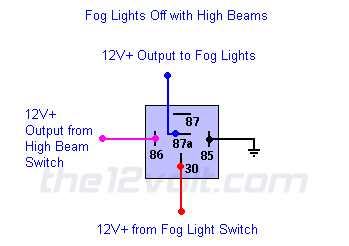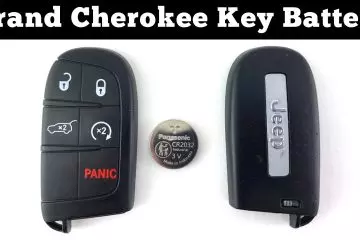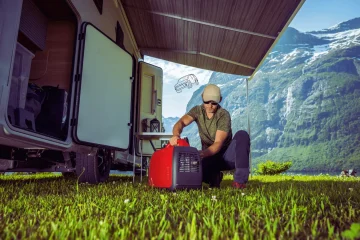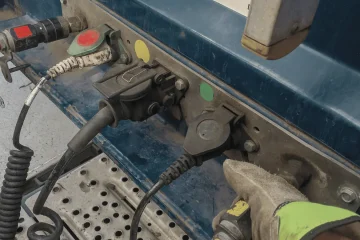To wire a relay for fog lights, connect the relay’s power and ground to the battery. Then, connect the relay’s trigger wire to the fog light switch.
When it comes to enhancing visibility during foggy conditions, installing fog lights is crucial. Properly wiring a relay for fog lights ensures optimal functionality and safety on the road. By connecting the relay’s power and ground directly to the battery, you establish a reliable power source.
Additionally, linking the relay’s trigger wire to the fog light switch allows for convenient control. This straightforward process enables seamless integration of fog lights into your vehicle, providing enhanced visibility and safety while driving in adverse weather conditions.
Understanding Relays
Learn how to wire a relay for fog lights to enhance visibility on the road. Relays play a crucial role in controlling electrical circuits efficiently and safely. Understanding relays is essential for proper installation and optimal performance.
What Is A Relay?
A relay is an electronic switch that is used to control electrical circuits by using a low-power signal. It is a simple device that consists of an electromagnet, an armature, and a set of contacts. The contacts are normally open or closed and can be used to turn on or off a high-power circuit.How Does A Relay Work?
When a low-power signal is applied to the electromagnet, it generates a magnetic field that pulls the armature towards it. This, in turn, closes or opens the contacts depending on the type of relay. The contacts can be used to control a high-power circuit, such as fog lights. To wire a relay for fog lights, you need to connect the power source, the control switch, and the fog lights to the relay. Once the wiring is complete, you can turn on the control switch to activate the relay, which will then turn on the fog lights. In conclusion, understanding relays is essential when it comes to wiring fog lights. With the right knowledge, you can wire a relay for fog lights easily and safely.Choosing The Right Relay
When it comes to wiring a relay for fog lights, choosing the right relay is crucial to ensure the proper functioning of the lights. A relay acts as a switch, allowing a low current to control a high current, making it essential for fog lights that draw a significant amount of power. Understanding the relay specifications and determining the appropriate relay for fog lights are key steps in this process.
Understanding The Relay Specifications
Relay specifications include the coil voltage, contact configuration, and current rating. The coil voltage determines the voltage at which the relay operates, while the contact configuration refers to the number and arrangement of the relay’s switch contacts. Additionally, the current rating indicates the maximum current that the relay contacts can handle. Understanding these specifications is essential for selecting the right relay for fog lights.
Determining The Appropriate Relay For Fog Lights
When choosing a relay for fog lights, it’s important to consider the power draw of the lights and select a relay with a current rating that exceeds this power draw. Additionally, the coil voltage of the relay should match the voltage of the vehicle’s electrical system. By ensuring these factors align, you can select the appropriate relay that will effectively control the fog lights.
Selecting The Correct Wiring
When it comes to wiring a relay for fog lights, selecting the correct wiring is crucial for ensuring proper functionality and safety. This involves determining the wire gauge, choosing the right connectors and switches.
Determining The Wire Gauge
Before proceeding with the installation, it’s important to determine the appropriate wire gauge for the fog light relay. The wire gauge should be selected based on the current draw of the fog lights. Refer to the manufacturer’s specifications for the fog lights to determine the appropriate wire gauge.
Choosing The Right Connectors And Switches
When selecting connectors and switches for wiring a relay for fog lights, it’s essential to choose high-quality components that can handle the electrical load and provide reliable connections. Use waterproof connectors to protect the wiring from moisture and ensure longevity. Select switches that are rated for the electrical load of the fog lights to prevent overheating and potential failure.
Credit: www.quora.com
Preparing The Vehicle
Before you begin wiring a relay for fog lights, it’s important to prepare your vehicle properly. This involves locating suitable mounting locations, ensuring proper grounding, and more. In this guide, we’ll cover each step in detail to help you get started.
Locating Suitable Mounting Locations
The first step in preparing your vehicle for wiring a relay for fog lights is to find suitable mounting locations. You’ll want to choose areas that are easily accessible and won’t interfere with other components of your vehicle. Some common mounting locations include the front bumper or grille, near the headlights, or on the roof of the vehicle.
Once you’ve identified suitable mounting locations, you’ll need to determine how to mount the fog lights themselves. Some fog lights come with brackets that can be attached directly to the vehicle, while others may require custom brackets or modifications to the vehicle.
Ensuring Proper Grounding
Proper grounding is essential for the safe and effective operation of your fog lights. To ensure proper grounding, you’ll need to find a suitable grounding point on your vehicle. This can typically be done by locating a bolt or screw that is connected to the vehicle’s chassis.
Once you’ve identified a suitable grounding point, you’ll need to ensure that it’s clean and free of any rust or debris. You can then attach the ground wire from your fog lights to the grounding point using a ring terminal and a bolt or screw.
After you’ve located suitable mounting locations and ensured proper grounding, you can begin wiring the relay for your fog lights. This typically involves connecting the power wire from your fog lights to the relay, as well as connecting the relay to a power source and a switch.
It’s important to follow the wiring diagram provided with your relay to ensure that you make the correct connections. You may also need to use additional wiring connectors or terminals to ensure a secure and reliable connection.
Testing Your Fog Lights
Once you’ve completed the wiring process, it’s important to test your fog lights to ensure that they’re working properly. You can do this by turning on your vehicle’s headlights and then activating the fog light switch.
If your fog lights don’t turn on, you may need to check your wiring connections or troubleshoot any issues with your relay. Once you’ve confirmed that your fog lights are working properly, you can enjoy improved visibility and safety while driving in foggy conditions.
Wiring The Relay
Wiring the relay for fog lights is a crucial step in ensuring proper functionality and safety on the road. The relay acts as a switch that controls the power supply to the fog lights, protecting the vehicle’s electrical system from potential damage. Properly wiring the relay requires attention to detail and adherence to safety standards.
Connecting The Relay To The Fog Lights
When connecting the relay to the fog lights, it’s important to ensure a secure and reliable connection. This can be achieved by using the appropriate gauge of wire and high-quality connectors. Ensure that the connections are insulated to prevent any short circuits or electrical hazards. Properly securing the connections will help maintain a consistent power supply to the fog lights, enhancing their performance and longevity.
Wiring The Relay To The Vehicle’s Electrical System
Integrating the relay into the vehicle’s electrical system requires precision and care. Identify the appropriate power source for the relay, such as the battery or a designated power distribution point. Follow the vehicle’s wiring diagram to locate the ideal connection points for the relay. Ensure that the wiring is neatly routed and properly secured to prevent any interference with other components. Testing the relay after wiring to verify its functionality is essential for a successful installation.
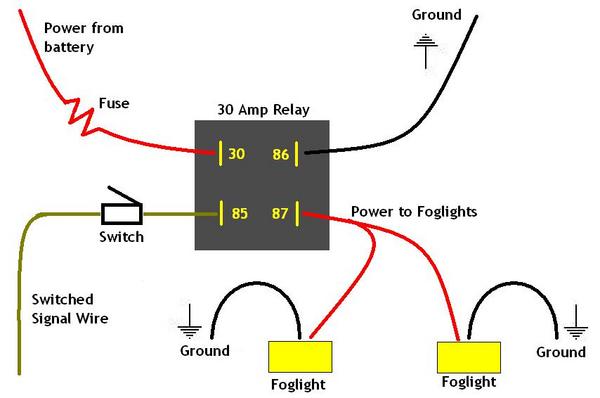
Credit: maxima.org
Testing And Troubleshooting
Testing and Troubleshooting:
Conducting Initial Functionality Tests
After wiring the relay for fog lights, test the functionality by turning on the fog lights to ensure they work properly.
Identifying And Resolving Common Wiring Issues
Check for loose connections or frayed wires that may impede the relay’s performance. Resolve any issues promptly to ensure optimal functionality.
Ensuring Safety And Compliance
For safe and compliant fog light installation, wiring a relay is crucial. It ensures proper power distribution and prevents electrical issues. Following a step-by-step guide will help you complete the task accurately.
Securing The Wiring To Prevent Damage
Properly securing the wiring prevents potential hazards or malfunctions.Adhering To Legal And Safety Standards
Following legal and safety standards is crucial to ensure a safe installation. Installing fog lights requires attention to detail and precision. Properly securing the wiring minimizes the risk of damage. Ensure all connections are tight and well-insulated. Adhere to manufacturer instructions for proper installation. Check for any exposed wires that may cause a short circuit. Regularly inspect the wiring to ensure it remains secure. Use protective coverings to shield the wiring from external elements.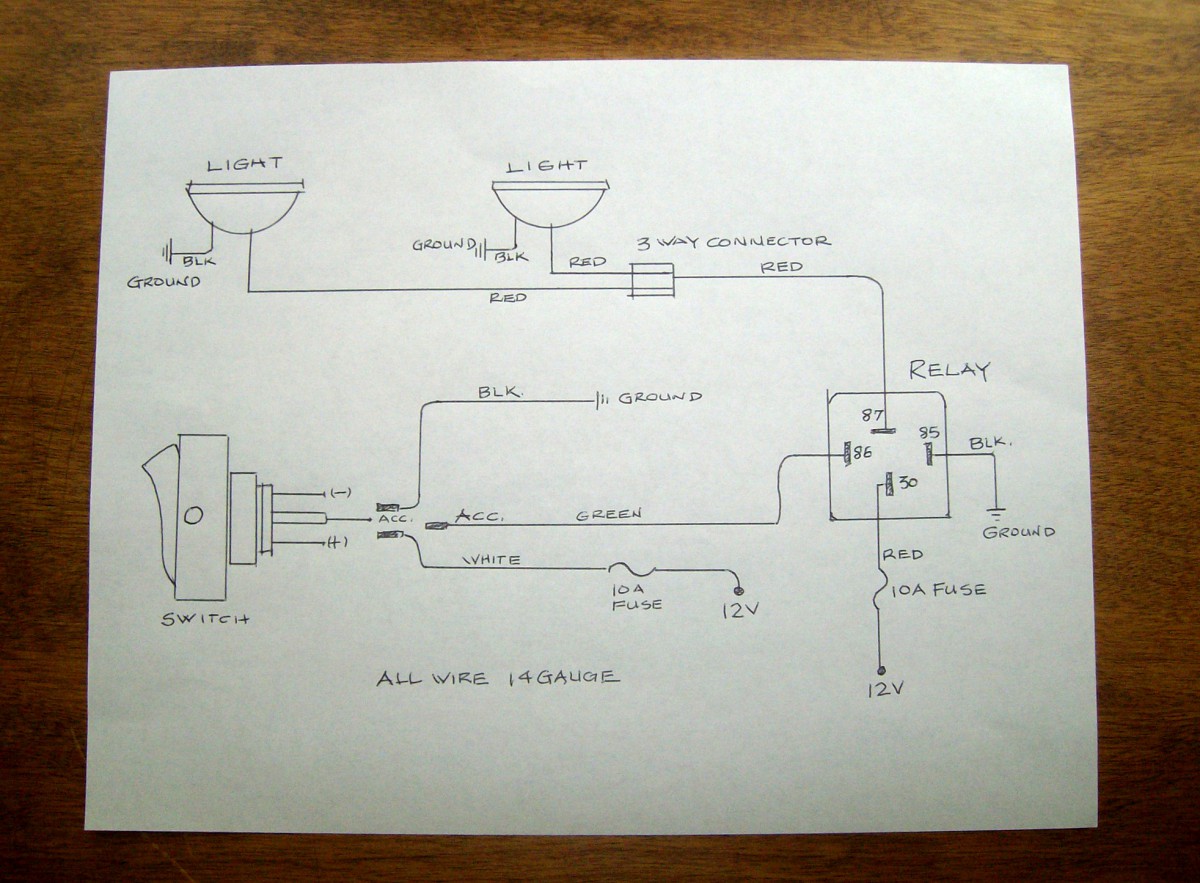
Credit: mossmotoring.com
Conclusion And Final Checks
After wiring a relay for fog lights, it’s crucial to perform a thorough final check to ensure everything is in proper working order. This step is essential for the safety and functionality of your fog lights. In this section, we will cover the final checks and inspections you should carry out to guarantee the optimal performance of your fog lights.
Verifying Proper Functionality
Before completing the installation process, it’s important to verify that the relay is functioning as intended. This can be done by turning on the fog light switch and ensuring that the lights illuminate promptly. Check for any flickering or dimness, as these may indicate an issue with the wiring or the relay itself. Additionally, test the fog lights in different conditions, such as during idle, while driving, and when the vehicle is stationary, to confirm consistent performance across various scenarios.
Final Inspection And Cleanup
Once the functionality of the fog lights and relay has been verified, conduct a final inspection of the wiring and connections. Ensure that all wires are neatly secured and free from any potential obstructions or hazards. Double-check the placement of the relay to guarantee it is protected from moisture, debris, and excessive heat. Lastly, clean up any debris or excess materials from the installation process to maintain a tidy and professional finish.
Frequently Asked Questions
Is A Relay Necessary For Fog Lights?
Yes, a relay is necessary for fog lights to ensure proper power distribution and prevent overheating of the switch.
What Is The Positive Wire For Fog Lights?
The positive wire for fog lights is the wire that carries the electrical current to power the lights.
Where Do You Connect The Power Wire For Fog Lights?
Connect the power wire for fog lights directly to the vehicle’s battery using a relay and switch for optimal performance.
How To Tell If A Fog Light Relay Is Bad?
To tell if a fog light relay is bad, check for dim or flickering lights, a non-functioning fog light, or a buzzing sound from the relay. You can also test the relay using a multimeter for continuity. If these signs are present, the fog light relay may be faulty.
Conclusion
Wiring a relay for fog lights is a simple and effective way to enhance visibility while driving in challenging conditions. By following the steps outlined in this guide, you can ensure that your fog lights operate safely and efficiently. With proper installation, you can confidently navigate through foggy and low-light environments, improving your overall driving experience.
